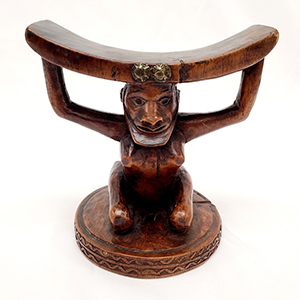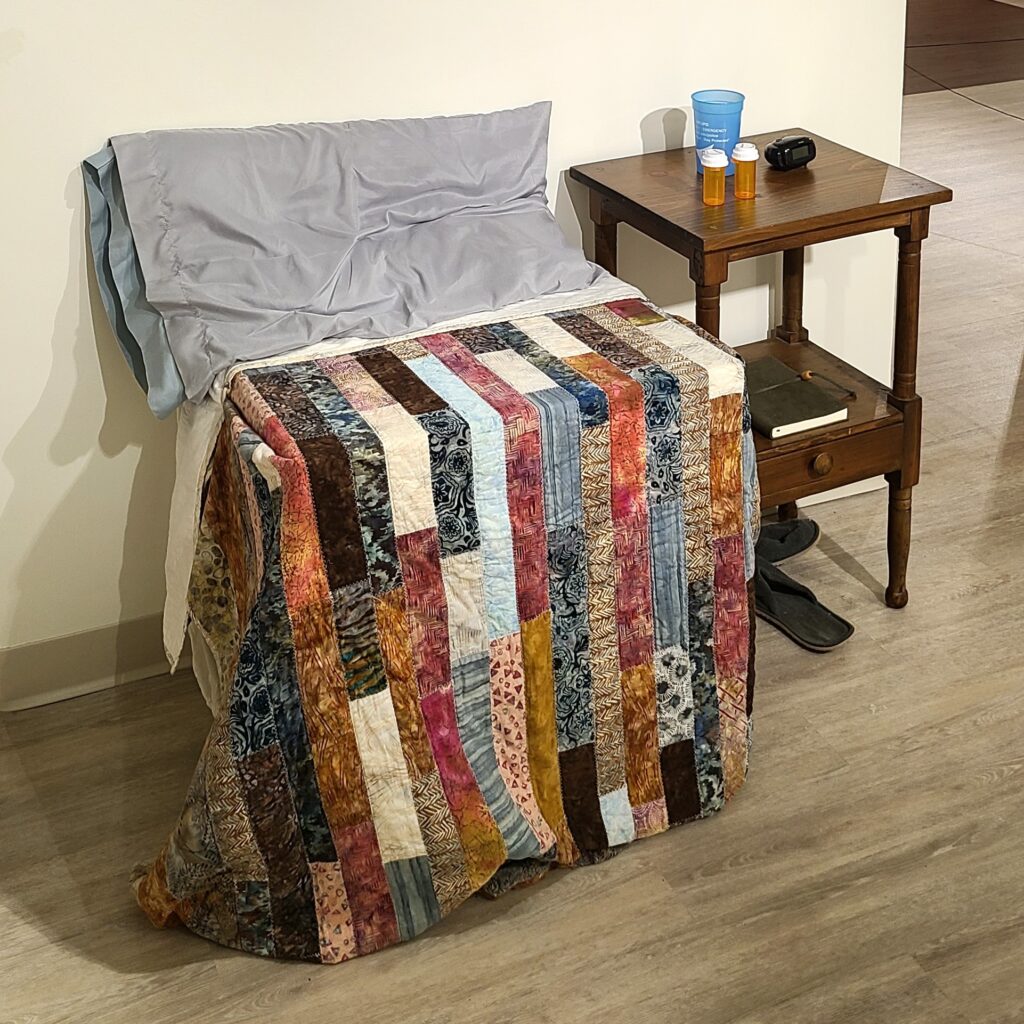Headrests from Asia
Many cultures across Asia and Oceania use headrests of varying styles.
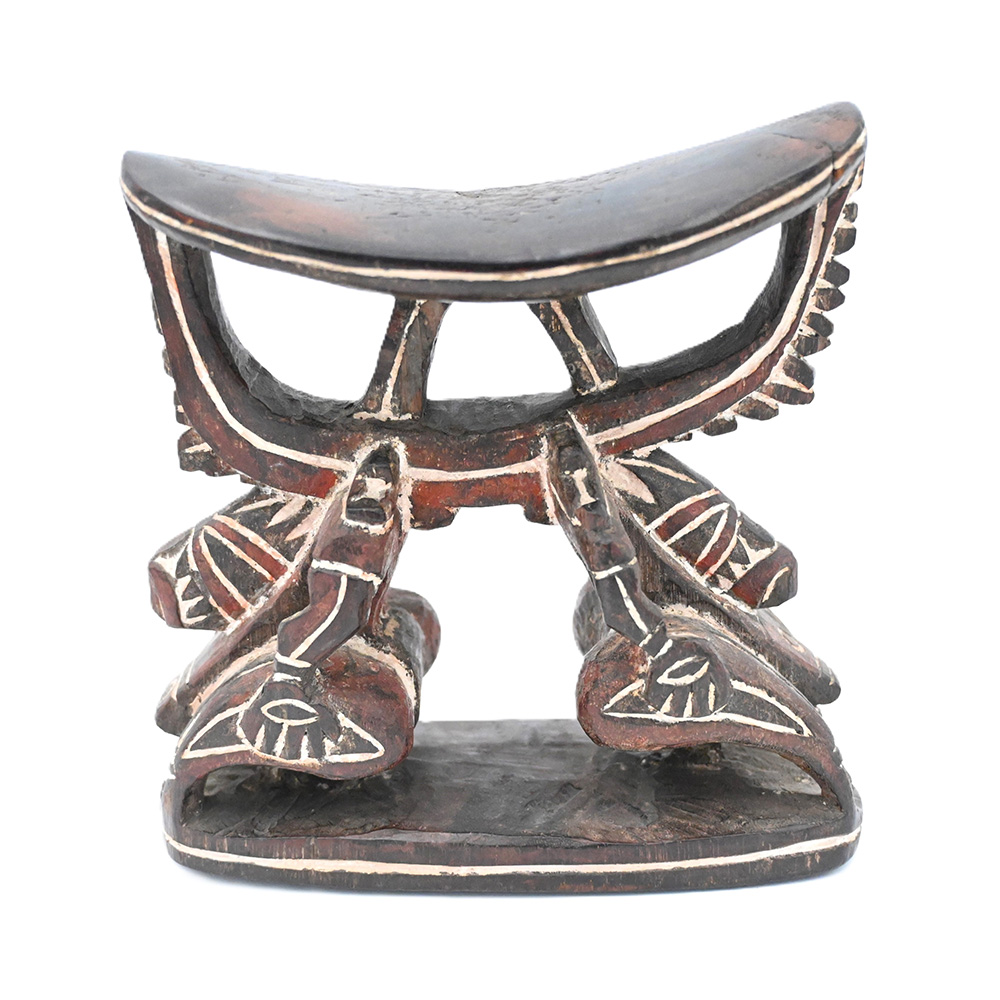
Headrests often include visual references to ancestors and family members.
This painted headrest features a kneeling male and female pair as the support. This style originated in the Huon Gulf region, though it may be a reference to a myth throughout Papua New Guinea about the first human couple.
Papua New Guinea, 20th c. CE
#1989.03.E.004
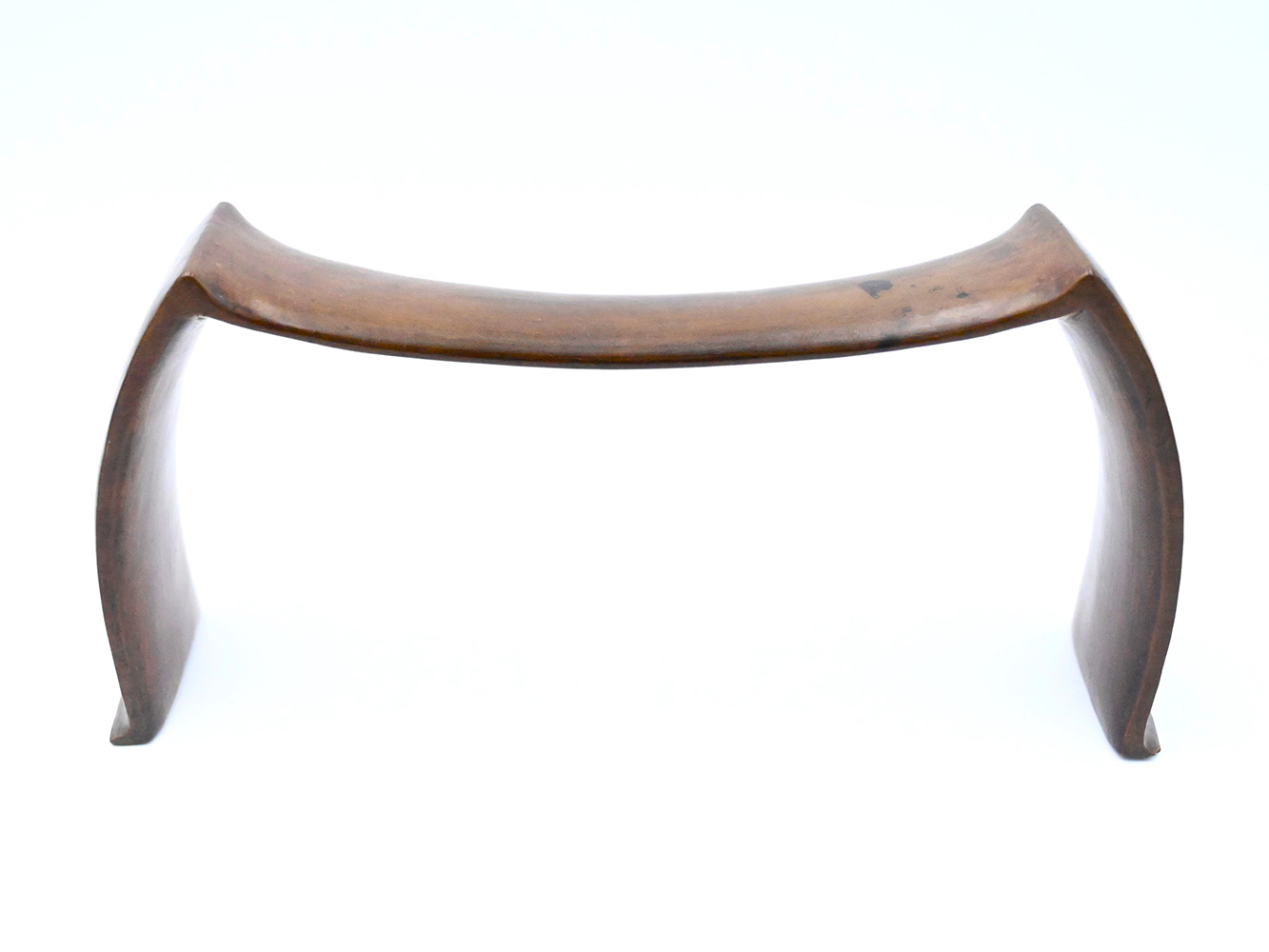
Linear, angular designs are characteristic of a style called kali hahapo.
Tongans view the head as the most sacred part of the body, so elevating the head is a way of showing it proper respect. This headrest’s solid, single-piece construction suggests it was used by a high-status individual.
Tonga, 19th c. CE
#1989.03.E.021
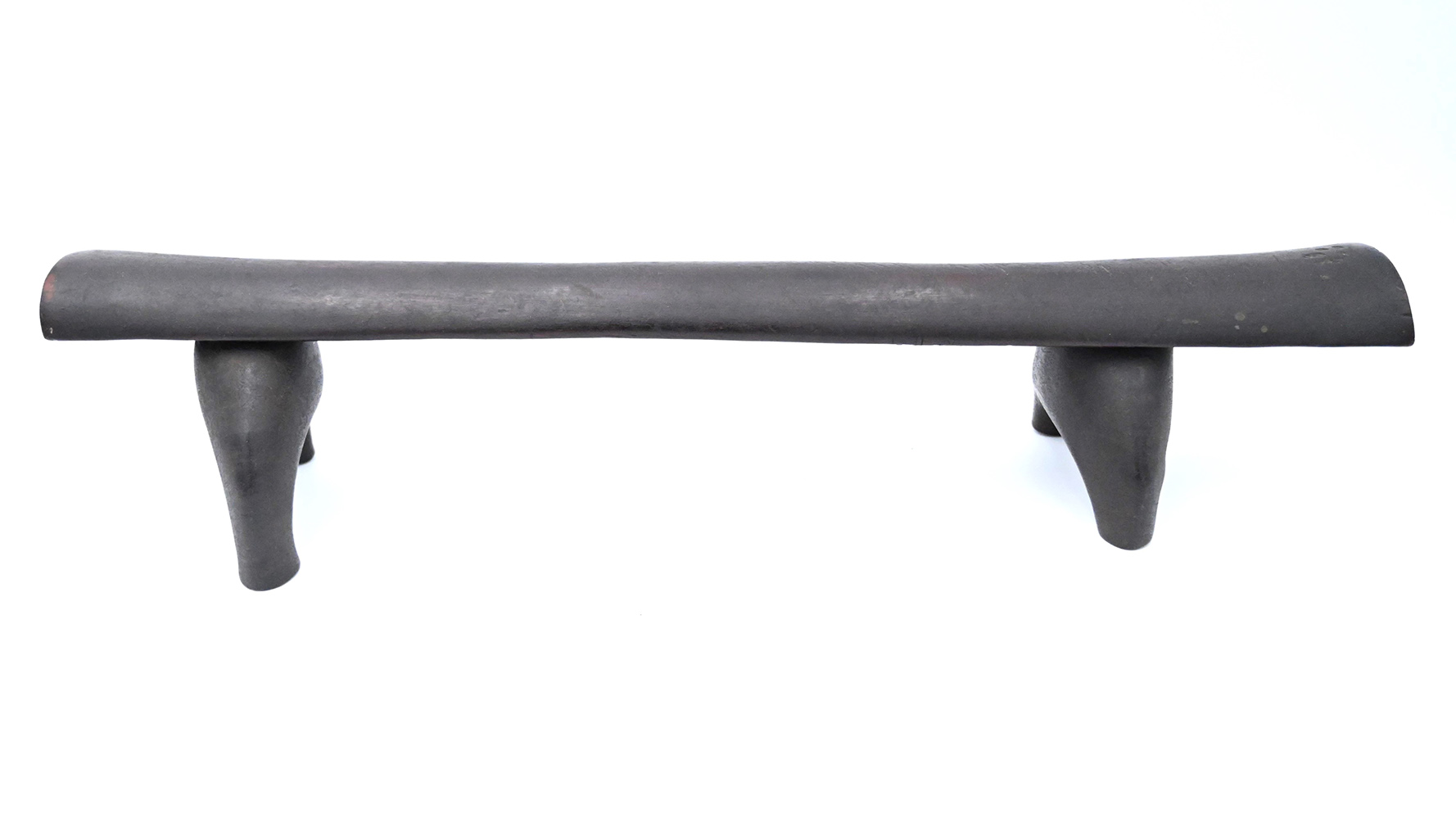
Wood is not often used for Samoan headrests.
Bamboo is a more common choice, particularly for headrests still used today. Despite the unusual material, the basic structure is the same with a long platform supported by two bowed legs. Long headrests like this one may have been used by a mother and child at the same time.
Samoa, 20th c. CE
#1994.13.E.03
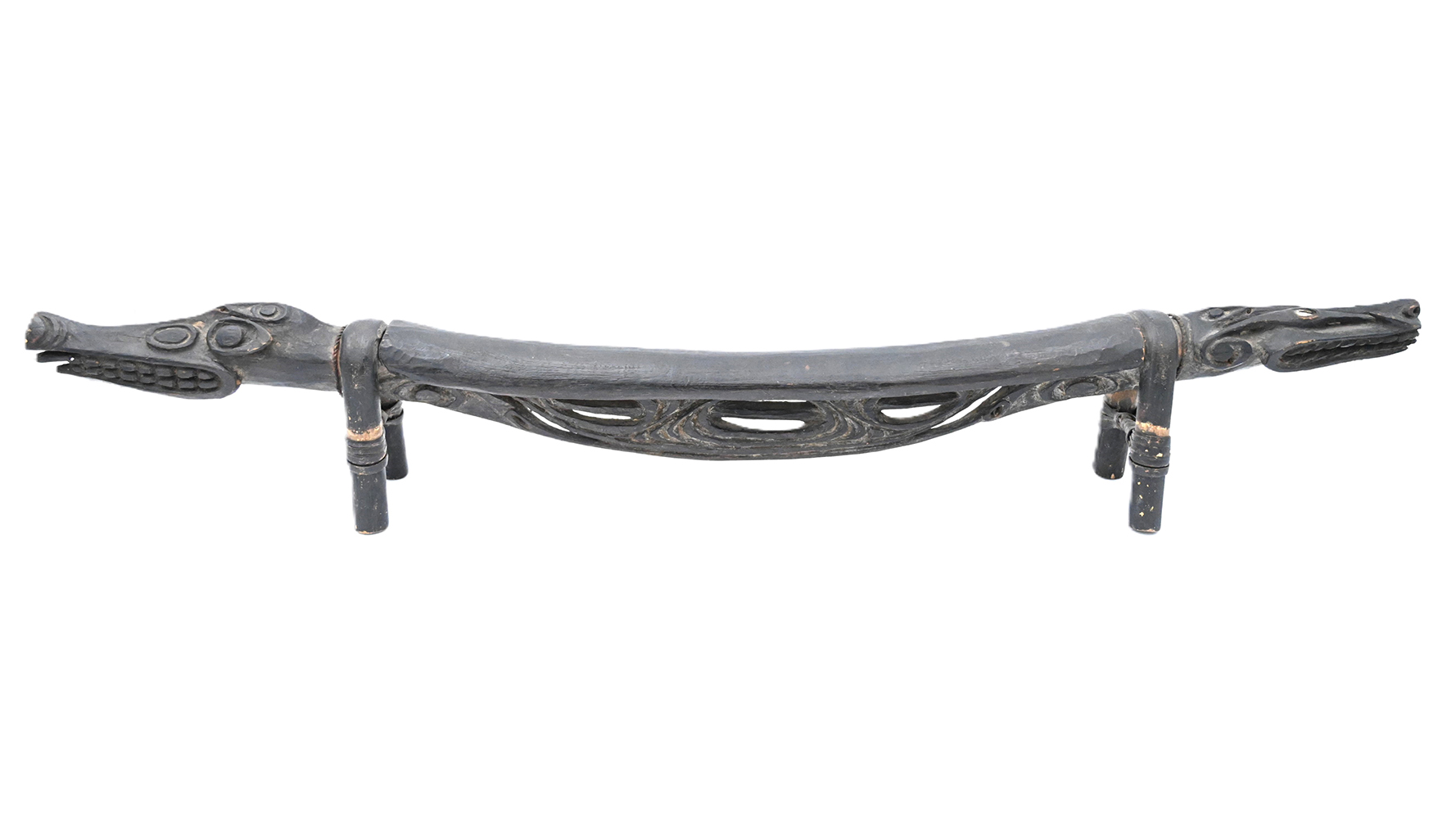
Crocodile heads represent the principal spirit of the Sepik River.
Iatmul artists typically carve their headrests with a plain central plank capped by elaborate finials depicting animals or ancestral spirits. The carver of this headrest left a thick midsection for stability, possibly indicating a large user.
Papua New Guinea, 20th c. CE
#1989.03.E.003
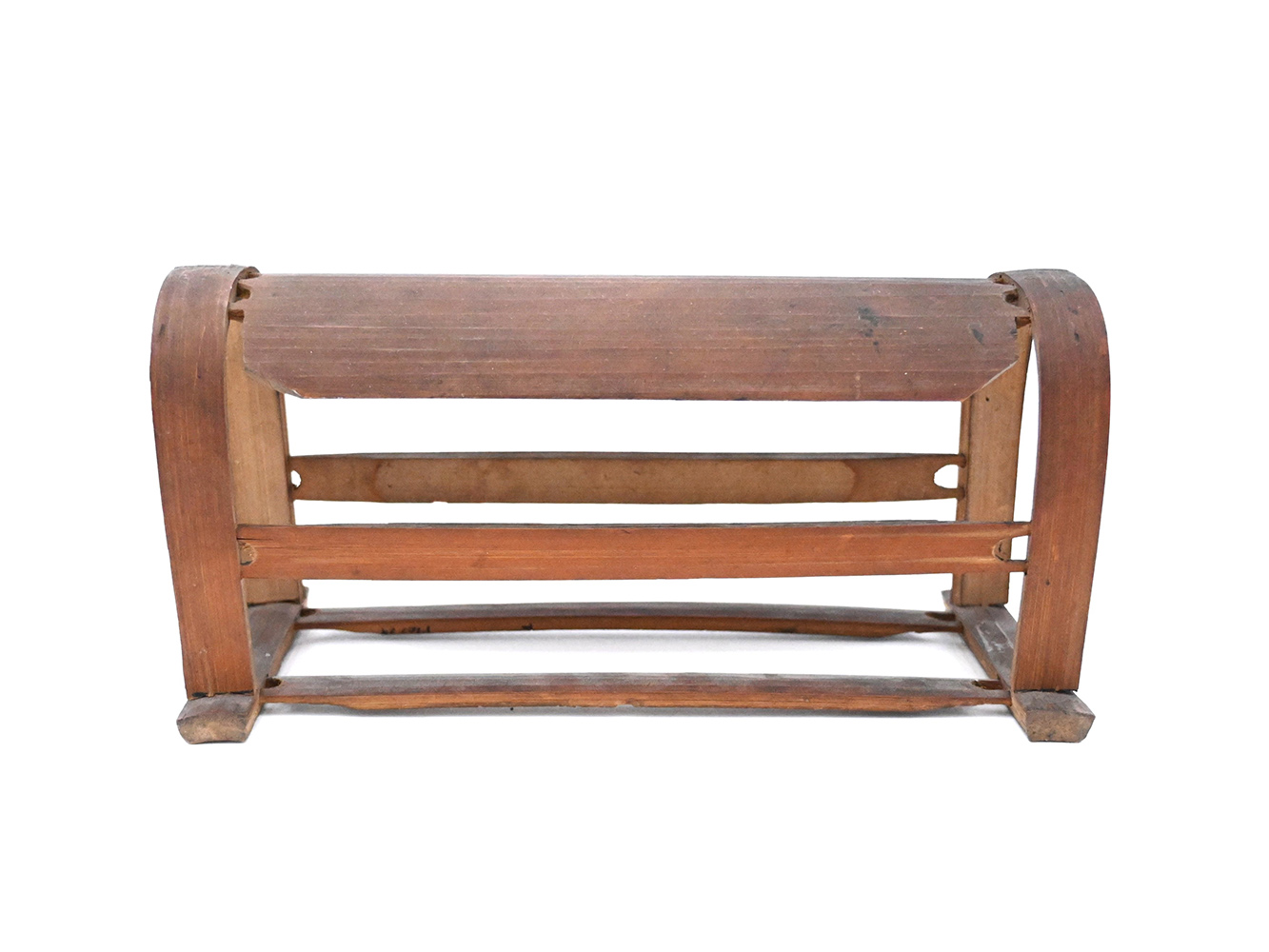
Bamboo is not a typical headrest material, so this piece may have had a special purpose.
This object would likely have been used by a woman of high social status while traveling. Elevating the head is widely recognized as a symbol of respect. This embodied behavior could be why many cultures create elaborate headrests.
China, 19th or 20th c. CE
#1986.4.E.239
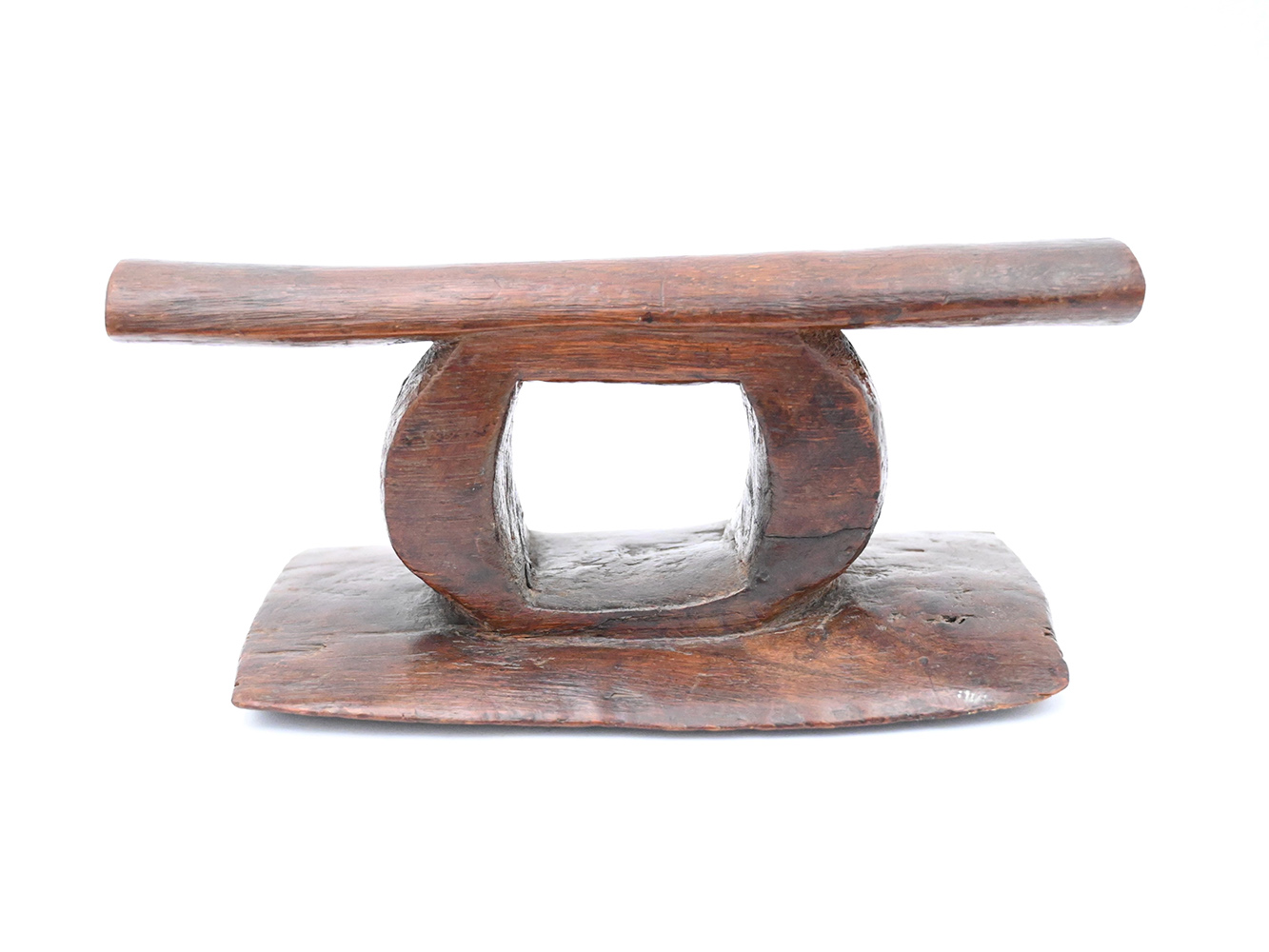
The central hole shows the carver’s ability to balance aesthetics and structural stability.
Headrests carved from a single block of wood were traditionally reserved for elite Fijian men. Through close contact during sleep, their headrests were thought to absorb some of their spiritual power, making them too dangerous to be used by anyone else.
Fiji, 19th c. CE
#1978.E.65
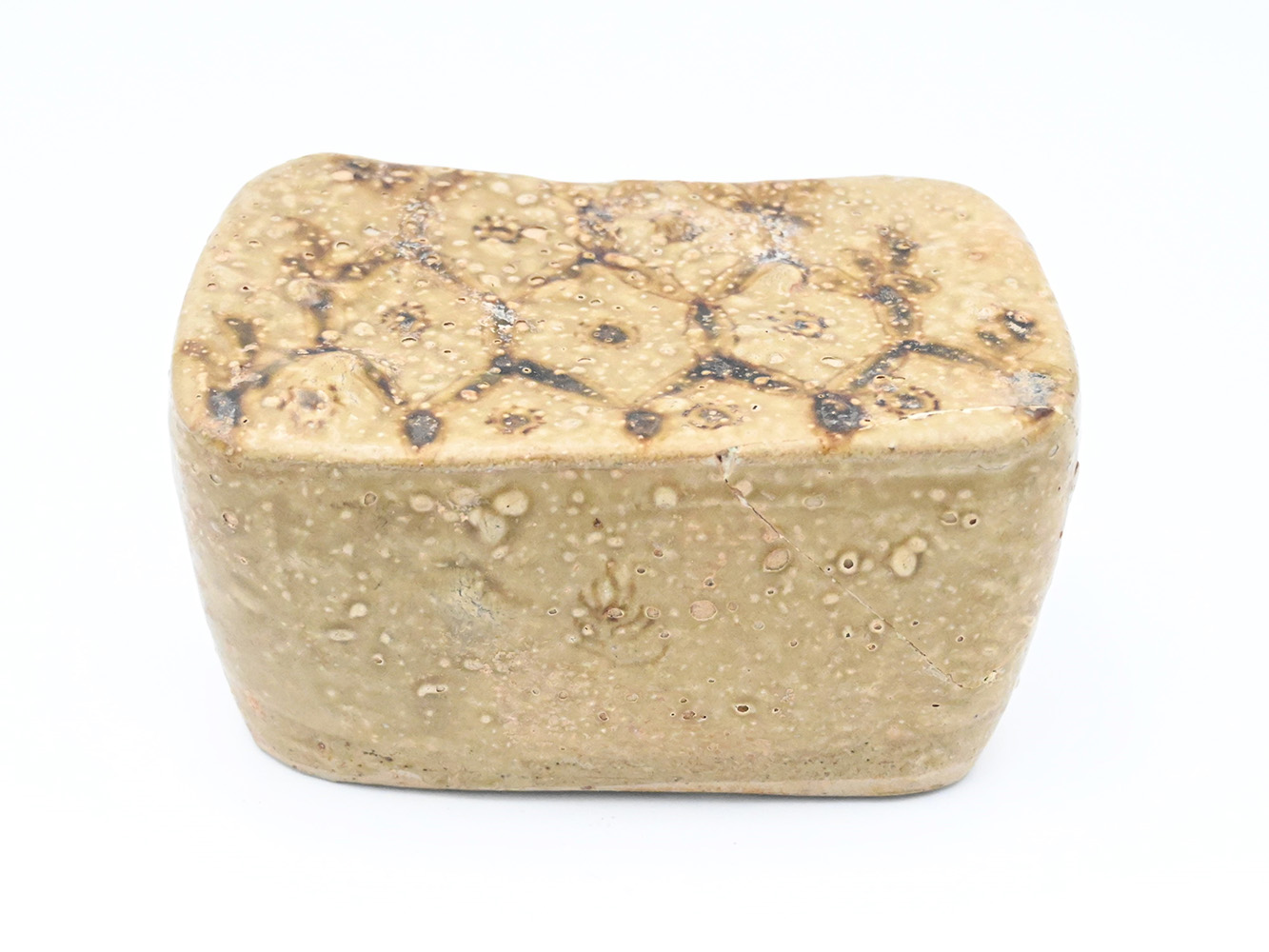
Ceramic “pillows” are surprisingly functional.
It is arguable whether fired clay is as comfortable as carved wood, but its decorative qualities make it the ideal object for domestic spaces. This object would have been used by upper and middle class families during the Tang Dynasty, from 618-907 CE. Ceramic headrests were also placed in burials with the belief that even the dead needed sleep.
China, 8th or 9th c. CE
#2012.01.A.627
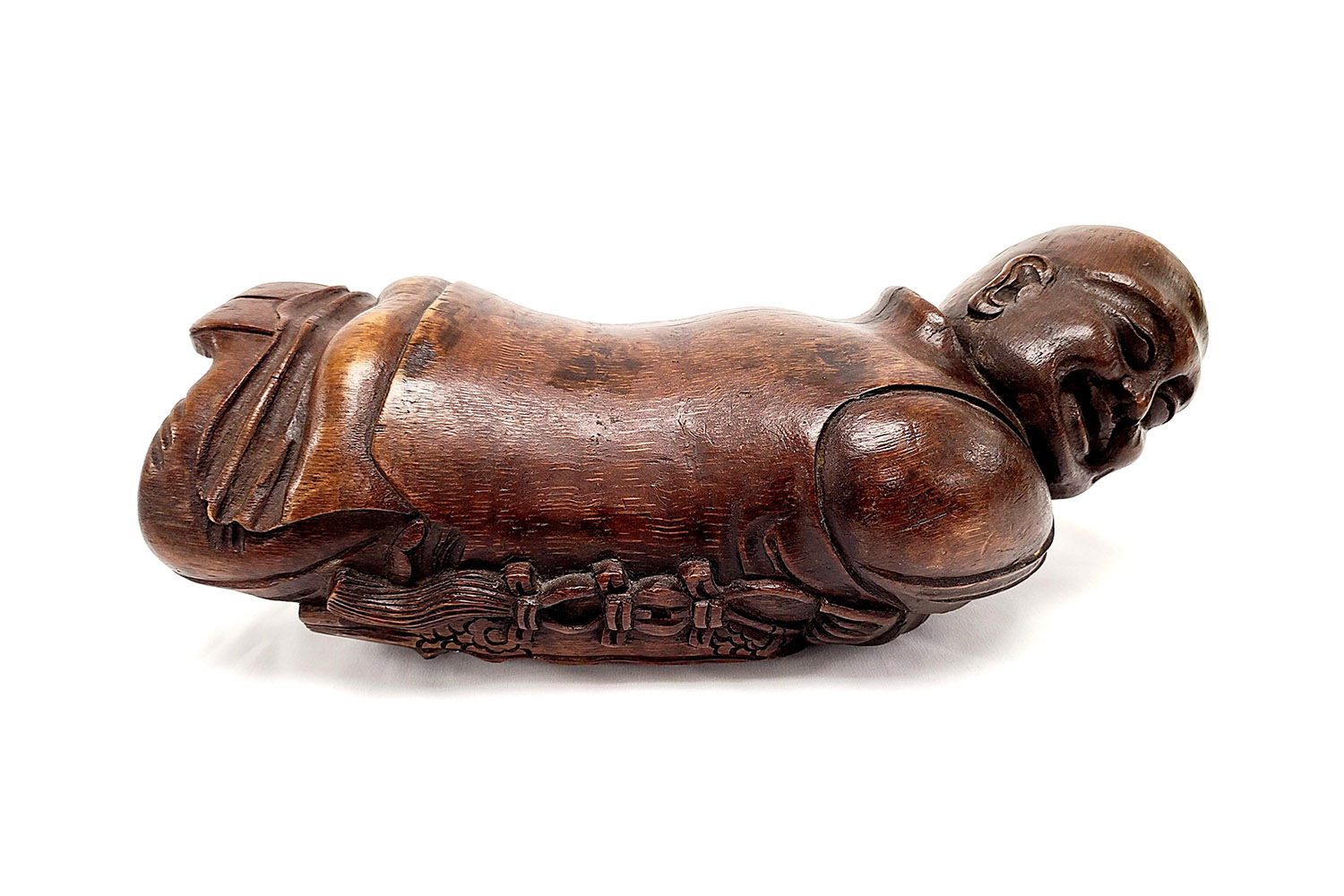
A smiling man forms the base of this headrest.
His religious robes and associated vest suggest that he is a monk. In the 19th century, it was thought that the aesthetic properties of the headrest would influence dreams. Monks are known to get little sleep each night, so perhaps this monk is awake and smiling to preserve the user’s happy dreams.
China, 19th c. CE
#1989.03.E.001
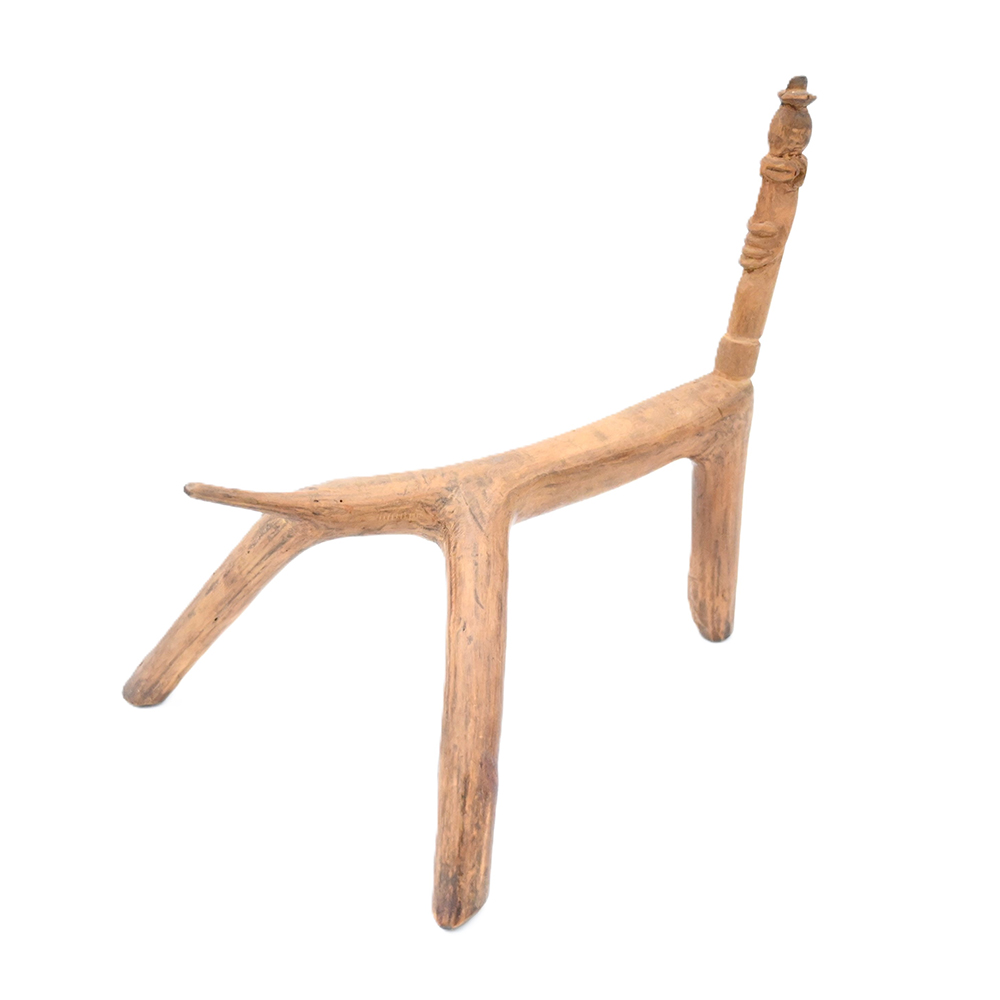
Three legs allow this headrest to remain stable on uneven ground.
The overall form of this headrest appears haphazard, but it is likely an intentional choice to give greater sleeping stability. The artist has embellished the top projection with a human face—possibly an ancestor figure.
Papua New Guinea, 20th c. CE
#1989.03.E.016
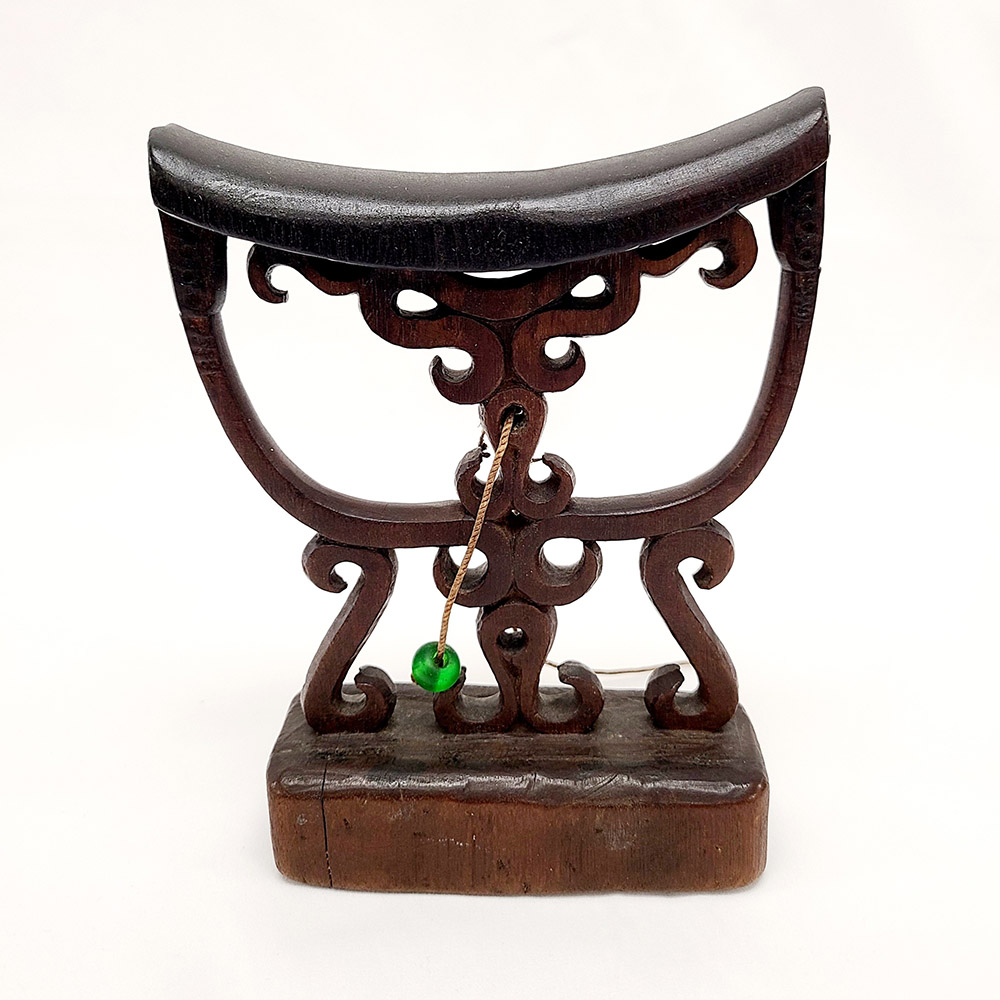
Indonesia, 20th c. CE
#1989.03.E.020
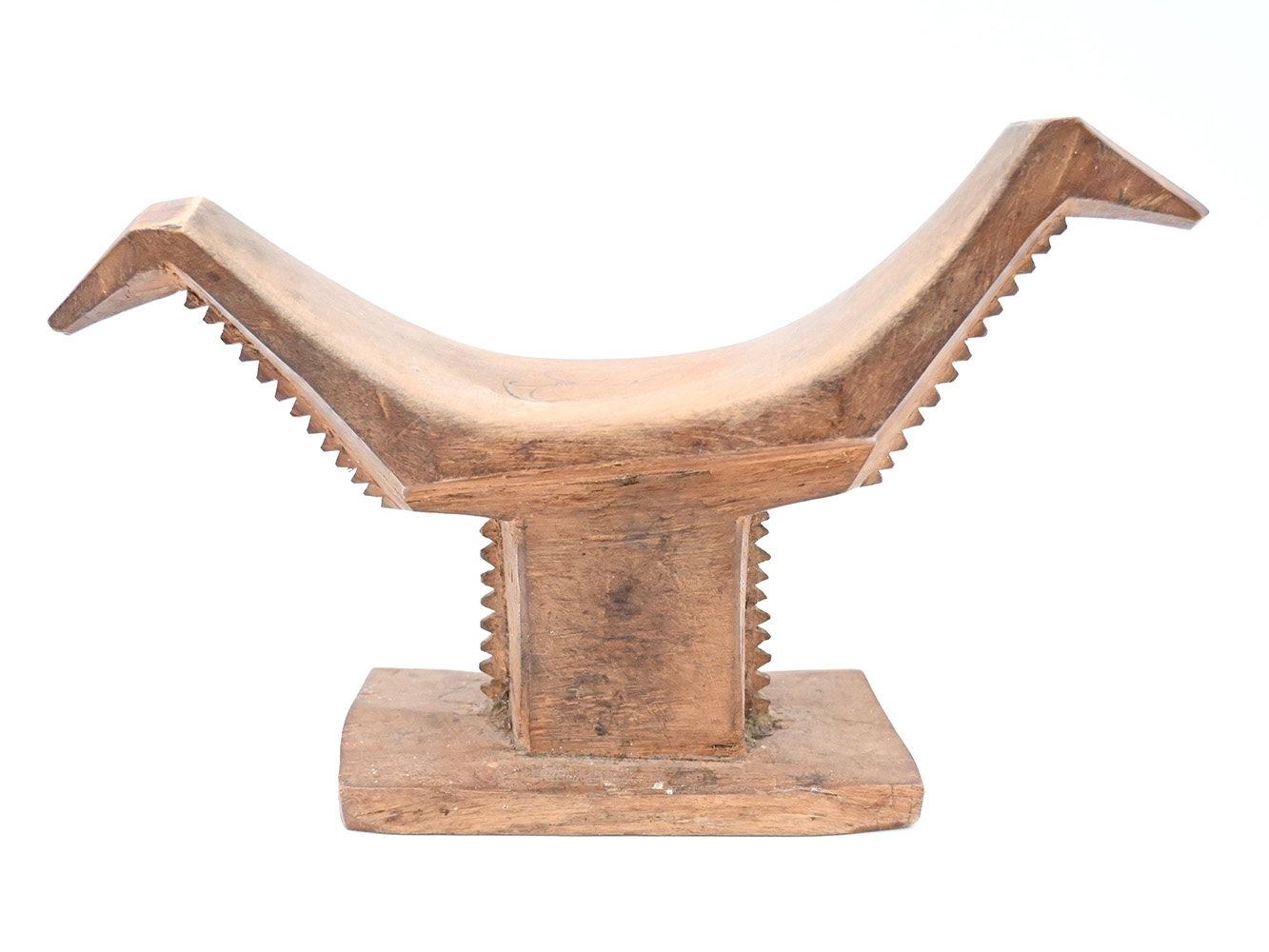
likely Solomon Islands, 20th c. CE
#1989.03.E.022
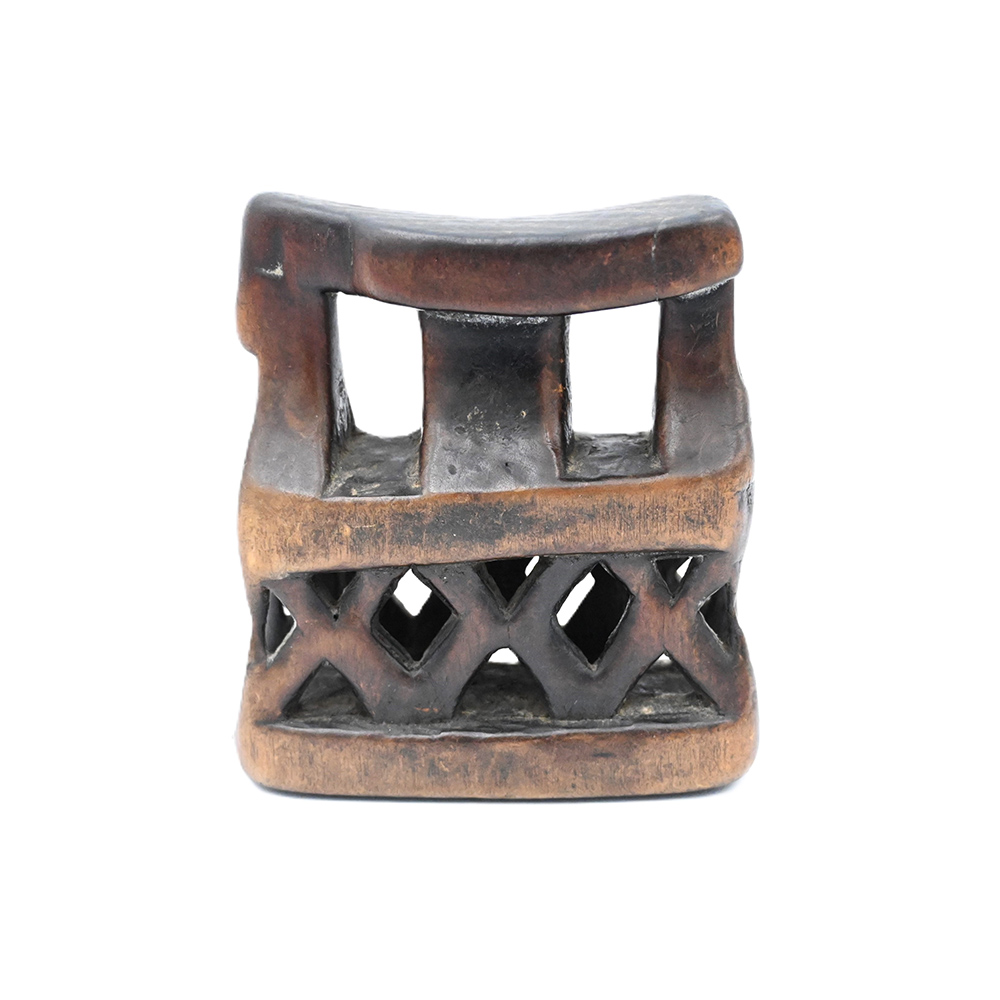
likely Papua New Guinea, 20th c. CE
#1989.03.E.014

Tonga, 19th or 20th c. CE
#1978.E.67
Explore the Other Sections of this Exhibit
